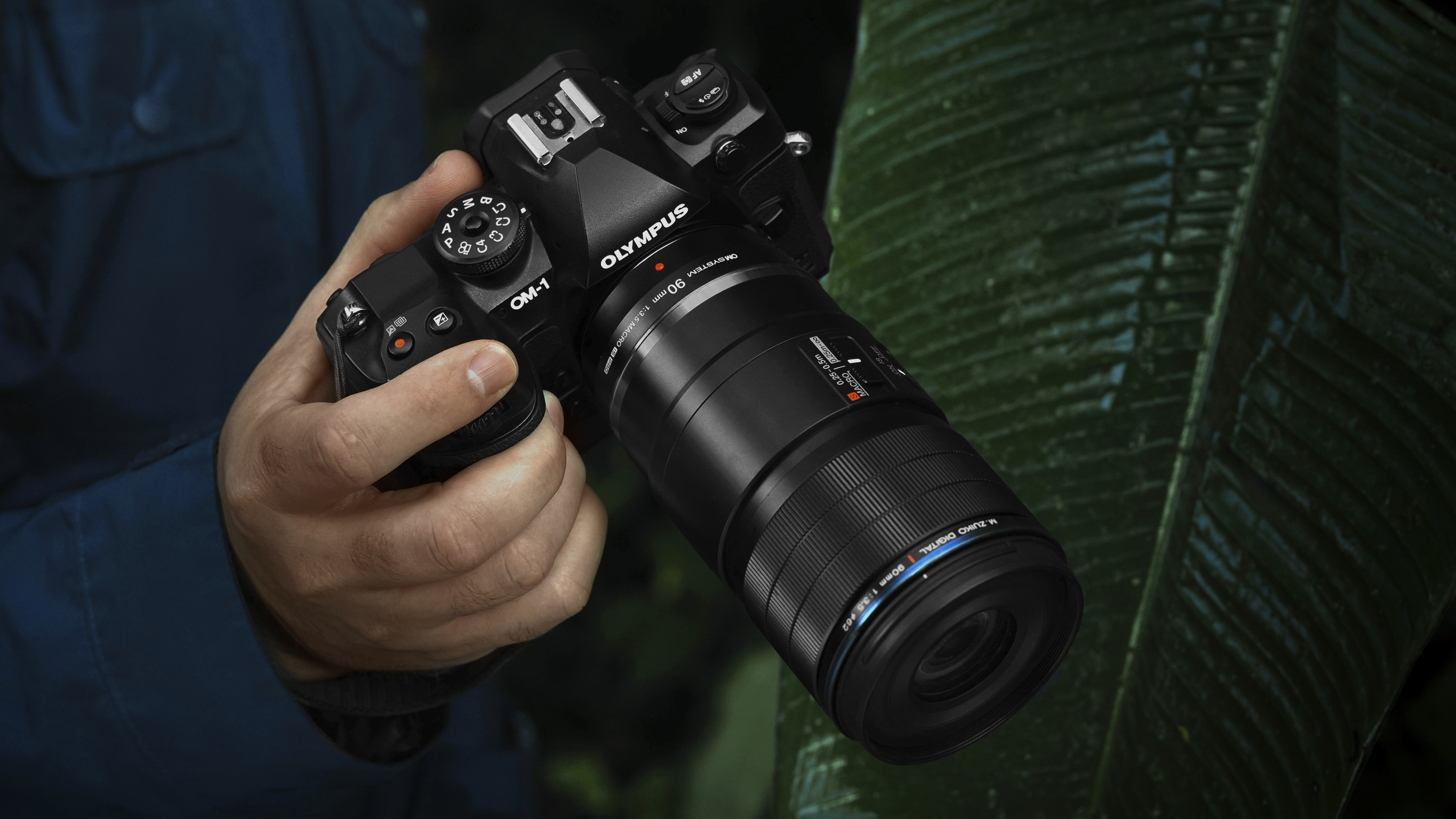
The focal length magnification factor of a cropped sensor – relative to the 35mm format which is the reference size – delivers a ‘virtual’ telephoto effect thanks to a narrower effective field of view. The increased ‘magnification’ – actually the enlargement of the smaller image – is promoted as advantageous for various areas of photography including sports, action, adventure and wildlife, but build a good close-focusing lens and it has plenty of pluses for macros too.
The Micro Four Thirds format – with its 1.97x focal length multiplier factor – delivers the most telephoto bang-for-your-buck in the mirrorless camera world and it’s something that OM Digital Solutions has been exploiting with lenses such as the OM System M.Zuiko Digital ED 40-150mm f/4.0 PRO, which is significantly smaller and lighter than a comparable full-frame lens with a focal range of 80-300mm. Likewise with earlier Olympus models such as the M.Zuiko Digital ED 100- 400mm f/5.0-6.3 IS (equivalent to 200- 800mm), but still compact enough to be comfortably used handheld.
The OM System M.Zuiko Digital ED 90mm f/3.5 Macro IS PRO is equivalent to 180mm in focal length, so you’re getting in a lot closer to start with, but the minimum focusing distance of 22.4cm gives a maximum reproduction ratio of 2:1, which is double life size and equivalent to 4:1 in 35mm format terms. What this means is that a bug which is, say, just 5mm in length will reproduce at 20mm, which is longer than the width of the M43 frame at 17.4mm.
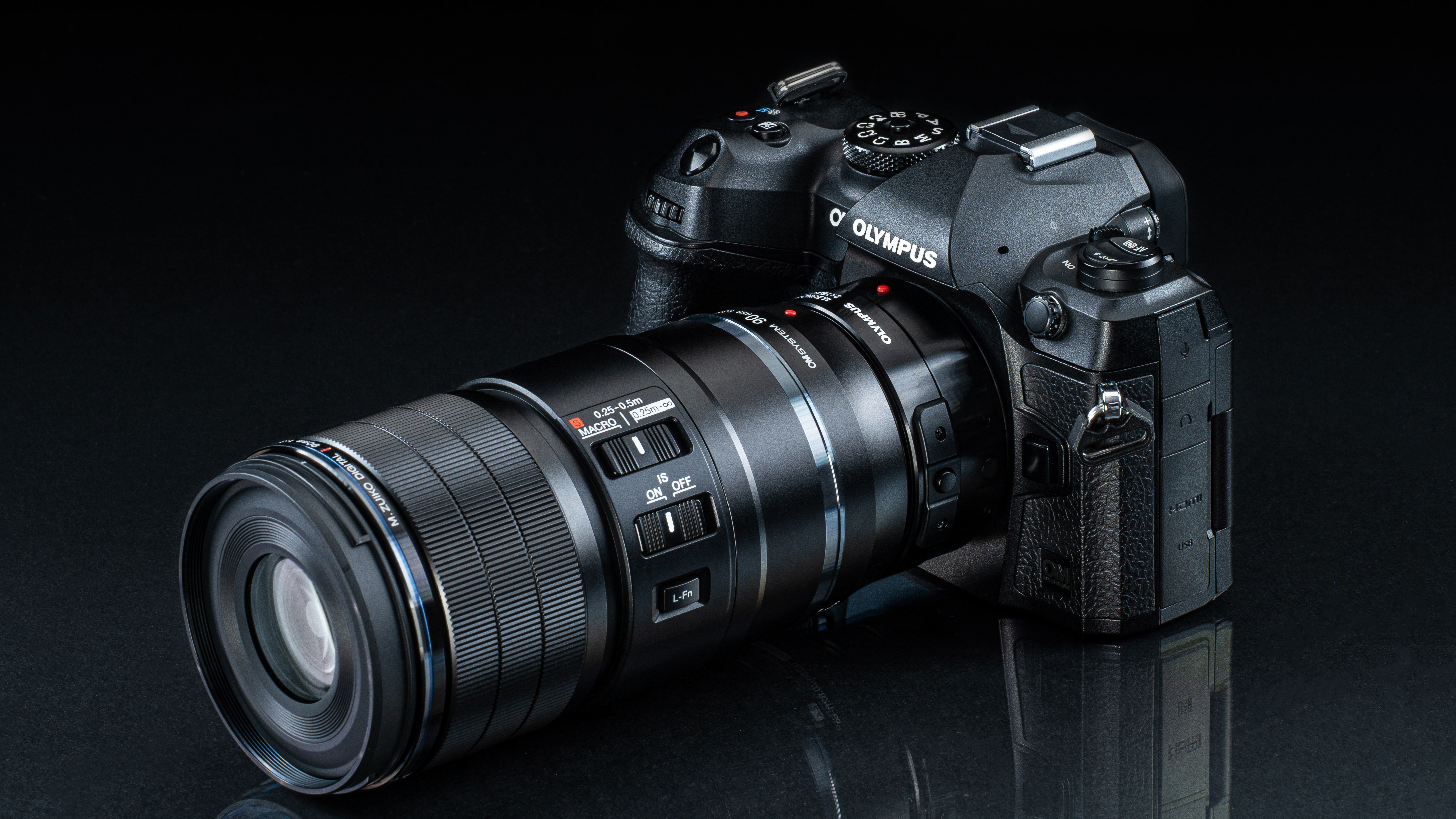
What’s more, the 90mm f/3.5 Macro is compatible with the OM System’s M.Zuiko MC series teleconverters so, if you fit the 2x MC-20, the effective focal length becomes 360mm and the effective reproduction ratio becomes 8:1 or eight times life size. This means a field size of just 4.3x3.3 mm will be reproduced full frame. Of course, it’s not an entirely free lunch because the MC-20 reduces the maximum aperture by two stops to f/7.1.
The M43 sensor size also lends itself to macro photography by virtue of having inherently more depth of field which becomes even more important when working at such short focusing distances. Mind you, the beauty of the longer focal lengths is that you don’t have to get in so close that you’ll spook flighty subjects such as insects. The longer working distance – around 6.5cm at the 2:1 ratio and 9cm at 1:1 – comes without sacrificing magnification.
Specifications
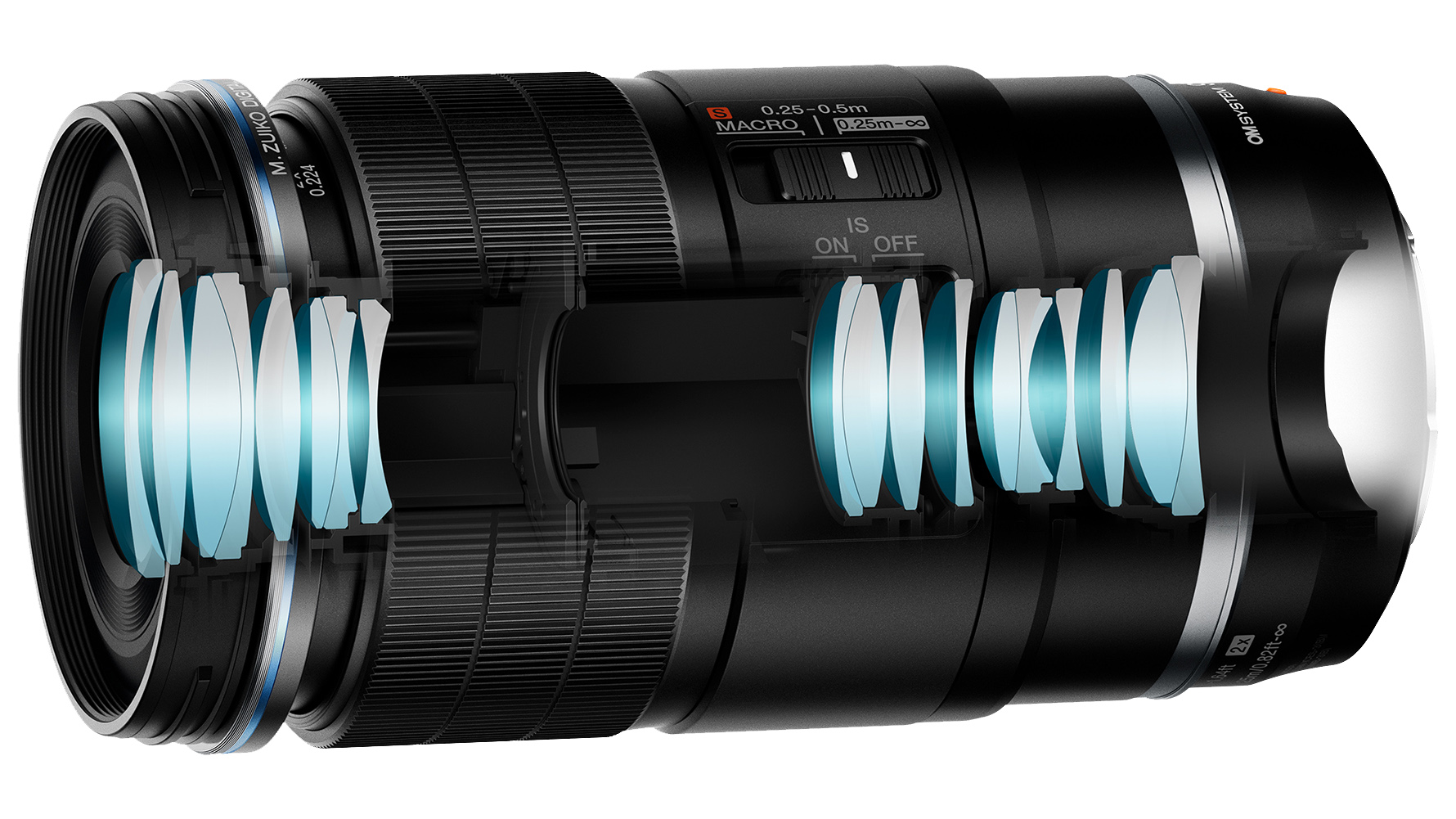
Mount: Micro Four Thirds
Full frame: No
Autofocus: Yes
Image stabilization: Yes
Lens construction: 18 elements in 13groups
Angle of view: 14 degrees
Diaphragm blades: 7
Minimum aperture: f/22
Minimum focusing distance: 0.25m, or 0.224m in S.Macro mode.
Maximum magnification ratio: 2:1 (double life size, equivalent to 4:1 in the 35mm format).
Filter size: 62mm
Dimensions: 69.8x136mm
Weight: 453g
Features

The M.Zuiko Digital ED 90mm f/3.5 Macro is the first autofocus macro lens capable of reproduction at 2:1 – the other options are all manual focus – and it’s another example of the OMDS engineers not being afraid to take on big optical challenges.
As a new-generation OM System product it has full weather protection to match the newest camera bodies, which means sealing against the intrusion of dust and moisture to the more exacting IP53 standard. The ‘5’ represents the protection against dust – which is the highest level – while the ‘3’ indicates the moisture sealing and to obtain this certification, the lens has to be able to withstand at least three minutes of water being sprayed onto it continuously. Additionally, the lens is also sufficiently insulated to allow for operation in subzero temperatures down to -10º Celsius. Furthermore, a fluorine coating has been applied to the exposed surface of the front element to help repel moisture and grease while also making it easier to clean. The main barrel tubes are all metal alloy.
A significant feature is the incorporation of optical image stabilization delivering six stops of correction for camera shake by itself, or seven stops in conjunction with the in-body image stabilization in the likes of the OM-1 or OM-D E-M1 III… which OMDS calls Sync IS. The lens IS corrects for pitch and yaw while the five-axis IBIS corrects for pitch, yaw, roll, X shift and Y shift.
The lens actually incorporates its own accelerometer for more accurate detection of camera shake. Image stabilization is a big plus with a macro lens as shooting very close-up – and you can be just millimeters from a subject with the OM System 90mm – is very awkward when the camera is mounted on a tripod and a lot of time can be wasted trying to get the setup exactly right.
Handling

Weighing in at a shade over 450g and measuring 136mm in length, the OM System 90mm Macro is quite easy to manage for handheld shooting. It feels particularly well-balanced on the OM-1, but doesn’t overpower the more compact and lighter OM-5 either.
The focusing ring has enough depth to give a comfortable grip and precise control. It employs the Manual Focus Clutch mechanism for push-pull switching between the AF and MF operations, which works very well in practice as it’s quick and foolproof. If you can see the focus distance markings then the lens is in MF mode… simple. Additionally, magnification markings are provided as well which is useful. There are also hard stops at either end of the collar’s rotation so you can get a better feeling of where you are within the focusing range rather than just twiddling aimlessly as is often the case with fly-by-wire controls.
There are two selector switches on the barrel – one for activating the optical image stabilisation and the other for setting the focusing range limiter. There are three focus range options – the full normal span of 25cm to infinity, a close-focusing setting covering 25 to 50cm, and an ‘S.Macro’ setting that delivers the minimum focusing distance of 22.4cm (and ranges to 25cm). If you want the maximum magnification (or anything beyond 1:1), the lens has to be switched to S.Macro mode when, incidentally, the maximum aperture becomes f/5.0.
The 90mm Macro also has a L-Fn multi-function button which is assigned a role from the camera body and this can include the white balance, ISO, exposure compensation, auto bracketing and the AE lock.
The screwthread filter fitting has a diameter of 62mm which, conveniently, is the same as the OM System 12-40mm f/2.8 and 40-150mm f/4.0 PRO series zooms.
Optical design
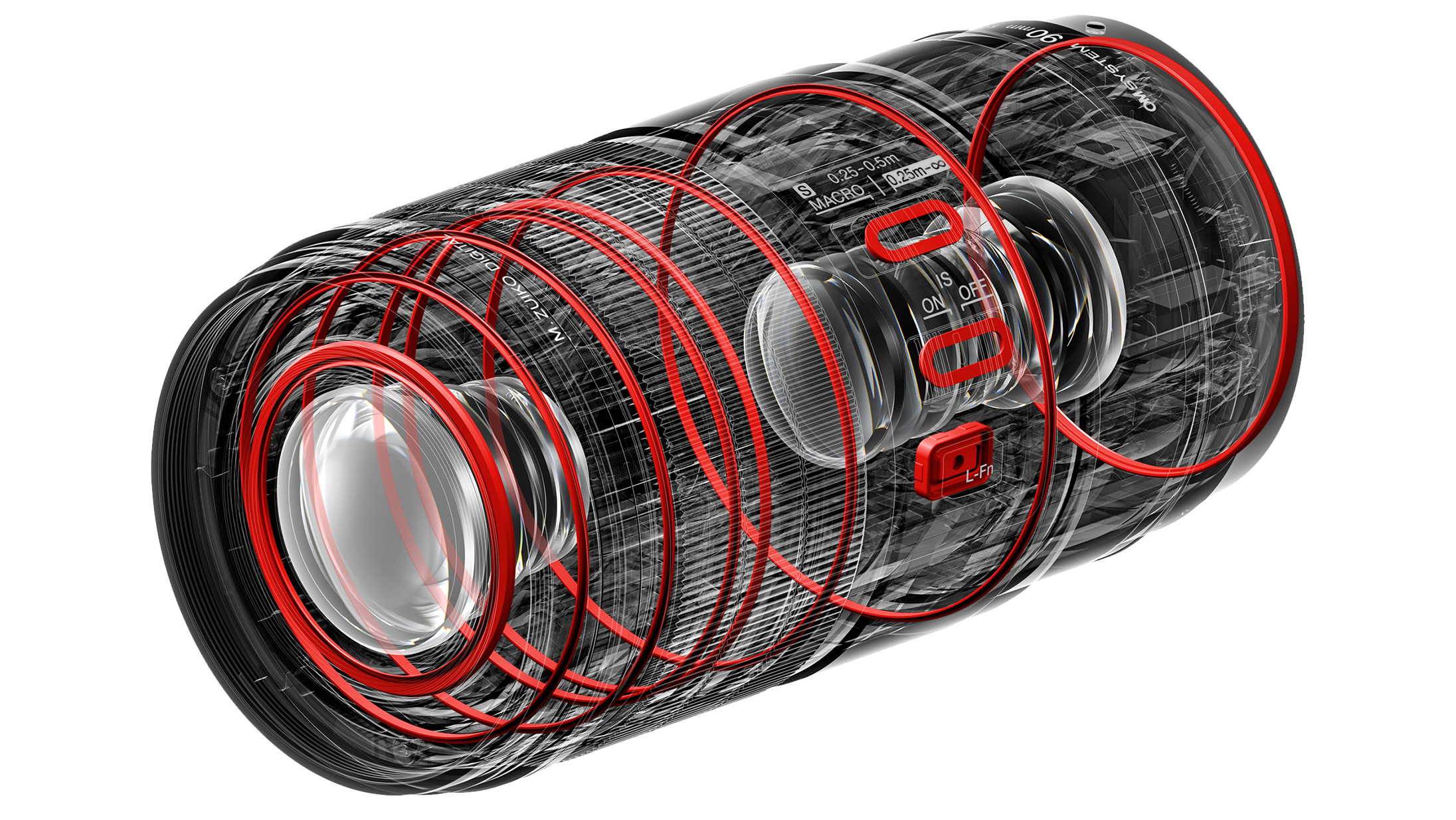
Not surprisingly, the optical design is a fairly complex one comprising 18 elements in 13 groups and designed to provide a high degree of correction, particularly for chromatic aberrations. Consequently, there is a total of eight special elements tasked with minimizing color fringing – two Super ED (Super Extra-Low Dispersion) types, one Super HR (Super High Refractive Index), one HR (High Refractive Index) type, and four ED (Extra-Low Dispersion) types. The optical design also minimizes color bleeding in the defocused areas.
The ZERO (Zuiko Extra-low Reflection Optical) multi-coating is applied to minimize ghosting and flare while also enhancing the contrast when shooting with strong backlighting. The focusing system employs two groups of elements that are driven independently in a ‘floating’ arrangement.
AF is available even at the closest focusing distances and the drive is fast enough to support both focus stacking and focus bracketing. The lens also supports the other multi-shot modes that are available in the OM-1 and OM-D E-M1X such as Live ND and High Res Shot available for handheld shooting in both models. With either RAW or JPEG capture, High Res Shot delivers 50MP in the handheld mode and up to 80MP in the tripod mode.
The diaphragm employs seven blades.
Performance


There are some definite challenges shooting at magnification ratios larger than 1:1, especially when shooting handheld. The tiniest of movements – either you or the subject – has a massive effect on both framing and focus. If you’re chasing insects or plant details, it really needs to be a completely still day as even the slightest of breezes creates issues. No matter, it’s a whole new and exciting world beyond 1:1… and it’s totally addictive as there’s so much to explore. Apart from the OM System 90mm Macro lens, the other key ingredient is patience.
If you know you’re going to be working at the closest focusing distances then it’s best to switch to the S.Macro mode and give the AF less work to do. We tested the lens on the OM-1 and the AF is still pretty fast in the realm of 1:1 to 2:1, but not quite as snappy as when shooting normally. And after first thinking that the single or small AF area modes might be the best options when working so close up, we found that the ‘All’ mode proved to be the most reliable overall. If you’re shooting handheld – especially with subjects that are moving even only slightly – the autofocusing is definitely a whole lot more accurate than manual focus… you simply can’t make any adjustments fast enough.

Even with the M43 sensor, the depth of field is still thinner than wafer-thin, so it’s best to opt for an aperture in the region of f/11 or f/16 – diffraction doesn’t seem to be much of an issue here – and dialing up the ISO to maintain as fast a shutter speed as is possible. The OM-1 still delivers great definition and saturation up to ISO 12,800 and even 25,600.
Optically, the 90mm f/3.5 Macro is a star performer, particularly in terms of sharpness and correction for chromatic aberrations. Corner sharpness holds up well at f/3.5, but there is a very slight improvement when stopping down to f/5.6 or f/8.0. Even at f/22 the frame is still uniformly sharp from center to corner with no evidence of any significant softening attributable to diffraction. We wouldn’t expect to see any distortion at an effective focal length of 180mm and there isn’t. Also not surprisingly, brightness fall-off (vignetting) is non-existent. Given the extremely shallow depth of field, it’s nice to see that backgrounds are very softly and smoothly rendered.

Early verdict
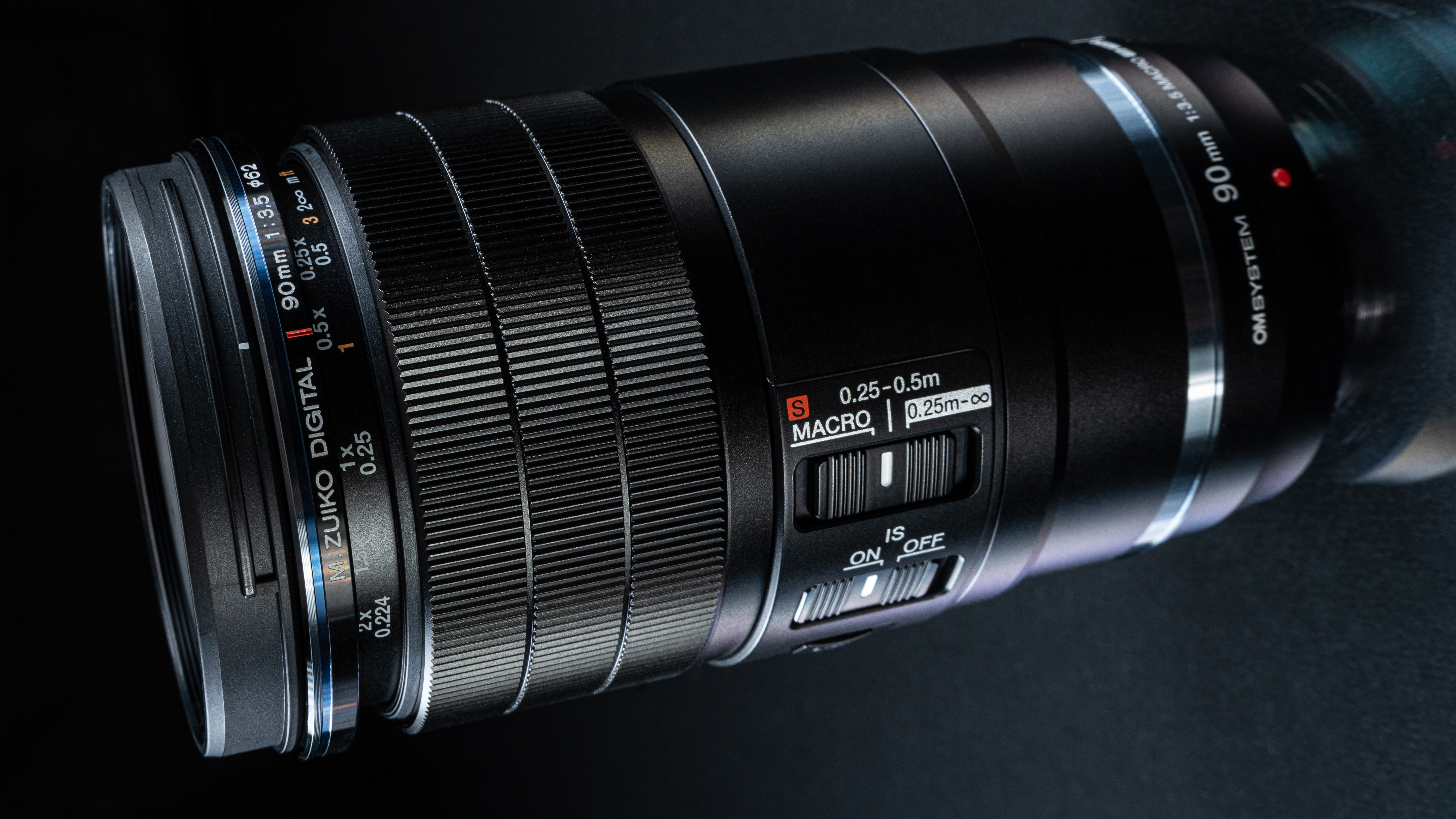
It takes practice and patience to get the most from the OM System 90mm f/3.5 Macro, especially when shooting over magnification ratios of 1:1 to 2:1, but this is more about the operator than the lens. If you get it right, this lens will reward with amazing images. It’s exceptionally sharp across the frame at all apertures up to f/16, and the AF – at least with the OM-1 – works a whole lot more reliably than you ever can. Of course, the 180mm effective focal length is useful for other applications – notably portraiture – but you’re buying this lens for its brilliant close focusing capabilities… and it’s certainly another compelling reason for considering the Micro Four Thirds format and OM System.
We will update this test with our usual lab results in due course.
Also read
Best Micro Four Thirds lenses
Best Micro Four Thirds cameras
Best macro lenses







